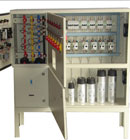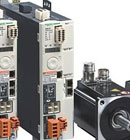Soft Starter

Electric motors consume about 63% of the electricity used in US manufacturing. They are the main force in most commercial buildings, industrial facilities, and appliances. In the United States reducing energy consumption has become a priority and business are seeking solutions to help them save energy.
Some of these technologies to reducing consumption of energy is a Variable Frequency Drive which we have discuss on this site. Another method is the use of a Soft Starter. A soft start Drive starts the motor at a lower voltage, slowly ramping up to operation voltage.
The Advantages of Soft Starts Are:
Reduced wear on mechanical gears, chains and sprockets, and unexpected repair of broken belts and jammed gearboxes.
Lower inventory of spare mechanical parts and operating costs.
Increased production rates by reducing machine maintenance downtime.
Prolonged life of electrical switchgear with lower inrush currents.
Soft stops on pumping applications, reduce piping system stresses and hammer effect.
Energy optimizing reduces motor energy losses when operating motor below maximum capacity.
How Soft Starts Works
AC induction motors operate most efficiency at around 75% of full rated load. At about 40% of full load, a motor's efficiency decrease. According to a Department of Energy study, 44% of motors in industrial facilities operate at 40% or less of full load . The soft start technology constantly monitors the voltage and current going to the motor. When the voltage and current sine waves diverage, greatly when the phase-lag increased the motor is lightly loaded and operating inefficiently. When this happens the soft start reduces the current and voltage appropriately, while always maintaining the motor at a constant (full) operating speed. When the load on the motor increases, The soft start reads this condition and increases the power to the motor so it does not stall. A Soft Start keeps the motor running at full RPM and reduces the power used by the motor when it is lightly loaded, much like cruise control in cars. The theory of making motors more efficient in this matter has been around for years, but the process has been very difficult to perfect.
Now with new and effective technology, which is all about algorithms and software, which improves and optimize the operation. Application software senses changing load conditions and adapts to increase performance. Power factor optimization eliminates motor over-fluxing and allows under-loaded or over-sized motors to operate more efficiently. With this new technology we are seeing savings of 15 to 40% in energy consumed.
Some of the Applications for soft start technology includes compressors, conveyors, pumps, saws, mixers, shredders, and injection molding machines.
With energy prices soaring and with the environmental concerns becoming increasingly important, the Soft Start Drive and Variable Frequency Drive may set the new standard for electric motor energy saving.
| Product Range |







